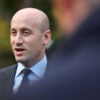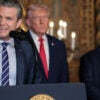When the non-partisan Congressional Budget Office (CBO) released their original estimate of President Obama’s Budget , they said it was going to be expensive: in ten years the President would accumulate over $9 trillion in deficits. Turns out, that was low-balling it.
In their original estimate, CBO assumed that interest rates would be held constant. This makes modeling the costs a bit easier, but makes little economic sense. In reality, as annual deficits are piled onto the national debt, any rational person (or foreign government) debating whether or not to purchase a newly issued Treasury Bond will begin second-guessing the wisdom of that investment. To get them to stop second-guessing and start buying, the government will have no other choice than to raise interest rates to increase debt-buyers’ returns. Rising interest rates would drive net interest costs up further, driving deficits and debt up even higher, driving interest rates up further, and so on in a vicious cycle.
At the request of Congressman Paul Ryan (R-WI), CBO recently redid their estimate assuming interest rates would not be held constant, and this more realistic scenario paints a very scary picture indeed.
Looking at three different interest rate scenarios, more accurate estimates of President Obama’s deficits would cost an additional $1.2 to $5.3 trillion, bringing the grand deficit-total to as much as $14 trillion.
While it was known that Obama’s budget plan to add national healthcare, introduce a cap and trade, and expand the size and scope of the federal government was going to be costly, turns out there are now 5.3 trillion more reasons to care.
































10 Replies to “Obama’s Budget Is More Expensive Than Initially Thought”